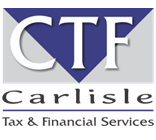This article is not about how to invest on the stock exchange. I am not a Certified Financial Advisor and am not offering any investment advice or tips on how to turn one million Rand into two, (is that two Rand or two million Rand?) I am simply using the methodology I use to invest on the Markets to illustrate my point below.
Before I invest on the Johannesburg Stock Exchange, I categorise each company which has attracted my attention into one of three categories:
The first category are those whose shares you don’t buy under any circumstances. It does not matter how cheap or attractive the share price is, you don’t invest in this company. Typically, this will include companies who have been involved in some kind of financial scandal. Examples would be Steinhof, EOH and Tongaat Hulett. The reason being that this kind of financial malfeasance would have been instigated and promoted by top management. They in turn would have appointed managers and staff who have adopted the same dubious ethical standards. It takes time and the right “political will” to oust these
people from the organisation and place the company onto a more honest trajectory. I also do not invest in listed BBBEE companies. The reason is that the company was likely created to address some political objective. We all know that political winds can change direction at a moment’s notice. These companies typically don’t have, because they never needed, any entrepreneurial ability as they would have been the recipient of some comfortable Government-sponsored contract. When the company faces political head winds, it finds itself without the resources to navigate itself back into profits.
The second category would comprise entities which are well run but find themselves in an industry which is considered a “twilight” or “dead”. British American Tobacco Limited is a perfect example. Smoking has become unpopular of late, with more and more people understanding the dangers of smoking and fewer and fewer people smoking. I was corrected recently when my broker sent me some research which indicated that Philip Morris has seen sales growth of 7.7%. But it has not altered my sentiment. Other examples would be Mondi and Sappi who must be seeing a reduction in printable paper sales. The
banks have been e-mailing bank statements for the last ten years. The South African Revenue Services no longer posts VAT, PAYE or Income Tax Returns. These are all done online, no paper used. Hence, with these investments you really want to buy when the price is low and get out as soon as you’ve realised sufficient profits. You should have no intention of holding onto these shares.
The final category contains all the other companies. How does one make a profit when trading in shares? It’s simple; buy when the price is low and sell when the price is high. That’s easy and everyone would agree. The question to ask is, how to determine when the price is low and when the price is high for a particular share? I use several indicators to decide. The starting point would be the high and low price in the last year and the last three years. Look at the company’s P/E ratio. If that is high – say over 20 – then I would consider the share price to be too high.
Also, I look at the company’s latest published Financial Statements. Listed companies have these accounts freely available on the internet. Ignore the Income Statement as that has been manipulated by the company directors to reflect the profits they promised to shareholders. The International Financial Reporting Standards (IFRS) provides the mechanism for the directors’ fraud. The IFRS standards are the most inconceivable and ridiculous standards ever written by overpaid academics who have their heads in the clouds and no understanding of what is really taking place. You see, with IFRS the company must
“fairly value” their assets and the corresponding profit is routed through the Statement of Comprehensive Income (formerly known as the Income Statement) to show the hapless investor a complete financial fairy tale. What is not easily manipulated is the Statement of Cash Flows. Somewhere in that Statement is an indicator of cash generated by operating activities. If that number is negative, then the company is immediately put into the first category described above. If that is positive, then I start to look at the amount of cash flow and consider how much cash was generated given the amount of assets on the Balance Sheet.
Looking at all these factors and perhaps even doing some company research, I finally decide at what price I should buy the shares and at what price I should sell. Once I have several companies on my radar I wait patiently until each of their shares are quoted at my buy prices. The TIME has arrived to buy the shares. The price will fluctuate but, at my “buy” price, the brokers and speculators are more inclined to offer a higher price than quoted and the share’s price will increase until the TIME to sell has arrived. Buy low, sell high. Simple.
Timing is important. Be patient and wait for the right TIME to buy and sell.
The exact same principle applies to entrepreneurs. You must make your decisions and implement your actions at the right time. Take an ice cream maker. It would be the wrong time to have your machines serviced in summer. In summer is your time to make as much ice cream as possible as the weather is conducive to your customers having a need for ice cream. Far better to service and fix these things in the winter when sales are depressed.
Too often I have seen clients implement great ideas or new products without being properly resourced. The items are launched to their clients, and it turns out to be a huge flop, not because of the product, but because the client was unable to either supply the products or properly train their customers on their use. Had the launch been delayed and the enterprise properly been resourced / trained / stocked then the items could have been a huge success.
Sometimes in our quieter business periods it is better to plan and strategise and decide carefully when is the optimal TIME to carry out those decisions which are in the best interest of your enterprise.
It really all boils down to optimal timing.
Peter Carlisle CA (SA)
February 2023




